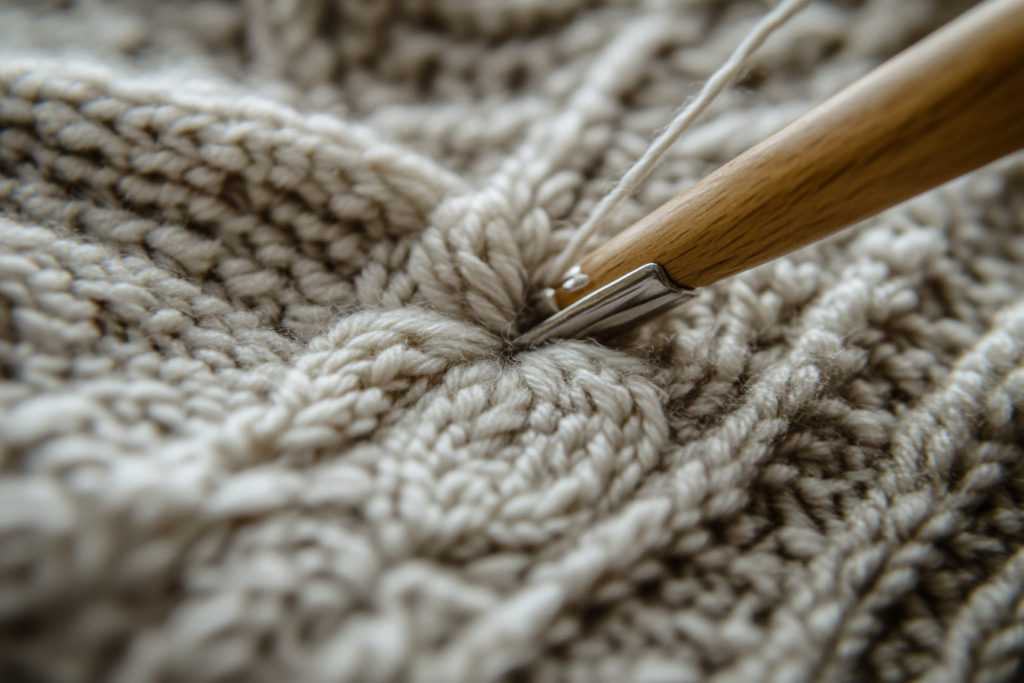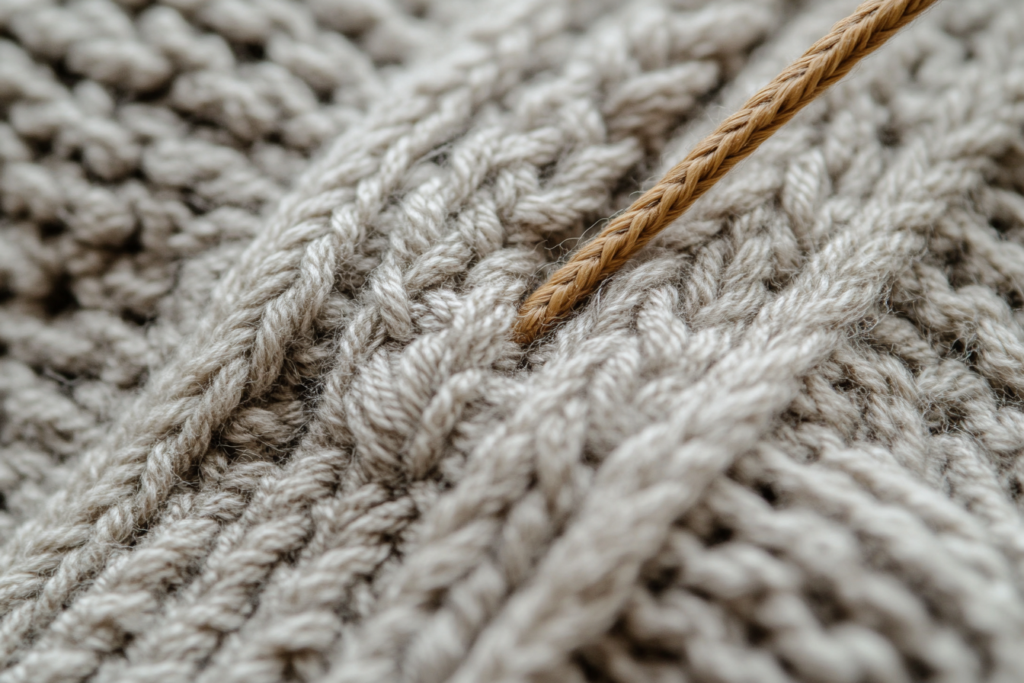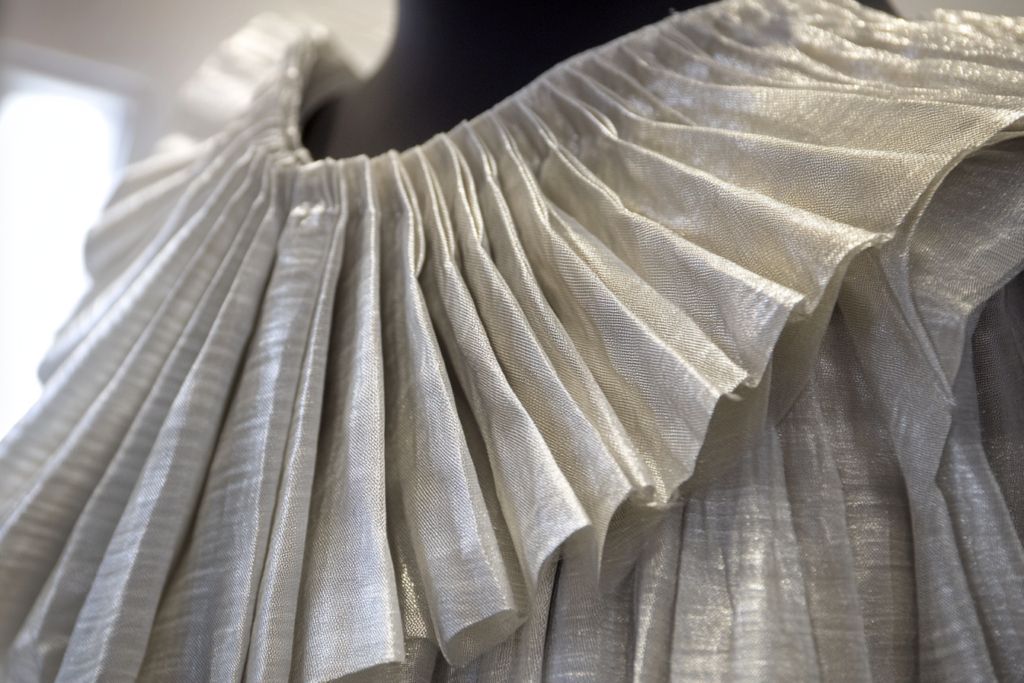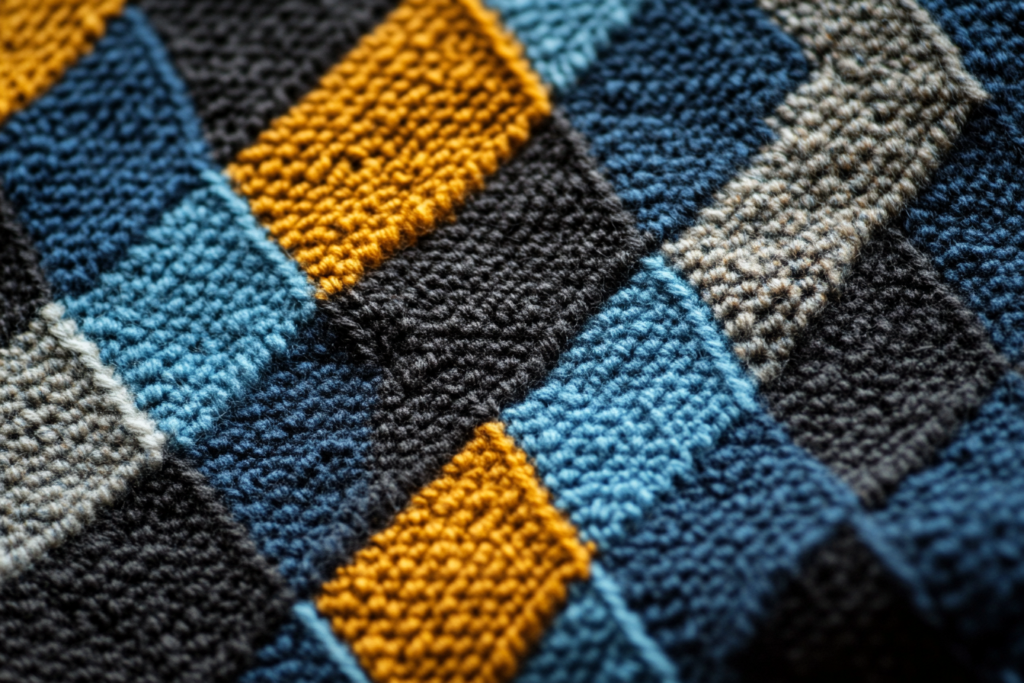Mark Stitch: A Specialized Knitting Technique for Narrow Areas
Meta Description: A mark stitch in knitting is used for narrow areas, where the thread is transferred to the adjacent needle, creating a distinct stitch. Learn how it enhances sweater construction.
What is a Mark Stitch in Knitting?
A mark stitch is a specialized knitting technique used when the area to be knitted is too narrow. In this process, the yarn being worked on is transferred to an adjacent knitting needle, forming a unique and distinct stitch pattern. This method helps maintain structure and even tension in narrow-knit sections, ensuring durability and a clean finish in sweaters and fine knitwear.


Key Features of the Mark Stitch
✔ Used in Narrow Knitted Areas – Helps maintain stitch integrity in tight spaces.
✔ Transfers Yarn to Adjacent Needles – Ensures smooth and even knitting flow.
✔ Creates a Unique Stitch Effect – Forms a distinct stitch, adding subtle texture.
✔ Common in Sweaters & Fine Knitwear – Found in ribbed sections, cuffs, and intricate designs.
✔ Prevents Distortion in Delicate Areas – Helps keep stitch patterns consistent.
Where is the Mark Stitch Used in Knitwear?
📌 Sweater Ribbing & Cuffs – Used where stitch density is high.
📌 Narrow Shoulder or Sleeve Sections – Helps maintain structural integrity.
📌 Fashion Knitwear & Fine Gauge Sweaters – Enhances precision in small stitch areas.
📌 Machine Knitting & Industrial Knitwear – Ensures consistent quality in mass production.
📌 Technical Sportswear & Performance Fabrics – Prevents fabric tension issues in high-stretch areas.
How a Mark Stitch Works in Knitting
1️⃣ A section of stitches is too narrow to be knitted normally.
2️⃣ The yarn is moved to an adjacent knitting needle to continue the knitting process.
3️⃣ This creates a distinct stitch formation, called a mark stitch.
4️⃣ The transition ensures the area remains evenly tensioned, preventing fabric distortion.
💡 Tip: Mark stitches help avoid puckering or uneven knitting in delicate sweater sections.
Mark Stitch vs. Other Specialized Knitting Stitches
| Feature | Mark Stitch | Tuck Stitch | Miss Stitch | Float Stitch |
|---|---|---|---|---|
| Function | Used for narrow areas in knitwear | Loops yarn for a raised texture | Skips stitches, creating floating threads | Creates long floats across stitches |
| Common Use | Sweaters, cuffs, ribbed sections | Textured knit patterns | Jacquard, lightweight knits | Double-knitted fabrics |
| Fabric Effect | Keeps tension even in small areas | Adds depth and bulk | Enhances elasticity and design | Produces decorative floating yarns |
💡 Tip: Mark stitches ensure small, structured sections of knitwear remain intact and well-defined.
Why the Mark Stitch is Important in Knitwear Design
✔ Prevents Loose or Distorted Stitches – Keeps narrow areas structured and stable.
✔ Maintains Even Fabric Tension – Ensures smoother knitting transitions.
✔ Used in High-Quality Sweaters – Helps enhance garment durability and comfort.
✔ Essential in Machine Knitting – Provides precision in technical knitwear production.
✔ Improves Aesthetic Appeal – Adds a unique stitch pattern in small areas.
Conclusion: The Role of Mark Stitch in Knitting
The mark stitch is a crucial technique in knitwear construction, particularly in narrow areas where stitch transitions need to remain seamless. Whether used in fine sweaters, ribbed cuffs, or industrial knitting, this stitch ensures a smooth, durable finish without fabric distortion.
For designers and manufacturers, understanding when and how to use mark stitches can enhance both garment quality and knitwear aesthetics, making it a valuable addition to modern knitting techniques.



